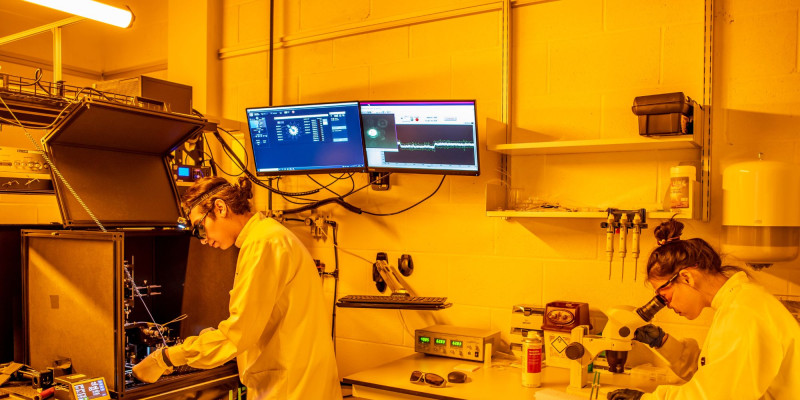Nottingham Trent University scientists say they have been able to isolate a single protein to study how it behaves and alters over time.

Nottingham Trent University scientists say they have been able to isolate a single protein to study how it behaves and alters over time.

They add that their new technology allows them to view how a protein 10,000 times thinner than a human hair behaves in its natural environment, allowing them to potentially better understand proteins linked to disease and thus assess how they respond to certain therapies.
“To be able to see things beyond your eyesight, you first need the right technology. Our nanostructure enables us to observe proteins at the nano-scale,” said lead researcher Dr Cuifeng Ying from Nottingham Trent University’s School of Science and Technology.
She explained the research employed very high concentrations of light which, when the beam is transmitted through a specifically engineered nano structure, generates the right amount of force to grasp and hold a single protein within the fluid without damaging it.
This can demonstrate how the light is scattered and the researchers can analyse this unique data to reveal how the protein is behaving in real-time. They can also mimic the body by altering factors such as salt concentration, pH, or oxygen levels in the liquid environment.
“This technique allows us to study the behaviour of a single living protein by using a high intensity light beam to trap, hold and study it in its own environment. Normally you’d need to study many proteins together to see how the group responds,” said Cuifeng.
“Lots of proteins are linked to disease; if we can see the root problem then we can potentially treat them better and earlier.”
To demonstrate the technology’s effectiveness, the researchers studied ferritin, a protein in the blood which stores and releases iron to prevent diseases associated with iron dysregulation, such as anaemia.
They successfully distinguished ferritin with iron and without by interrogating the data to reveal differences in weight and movement. This included identifying the point at which the ferritin without iron began capturing and storing iron.
Until now, studies of ferritin have only been able to use ensemble measurements to quantify the characteristics of a large number of proteins, which provides limited information about their structural changes.
The NTU researchers argue that because protein changes occur before symptoms in illness, their work could make it possible to identify and treat a range of diseases much earlier.
PhD candidate and first author of the study Arman Yousefi, said: “The scattered light provides us with a unique fingerprint to show us how the protein is behaving. With regards to ferritin, we observed the rigid and relaxed state of the protein with and without iron and even the process of collecting and storing the iron from its environment.”
Type and Press enter